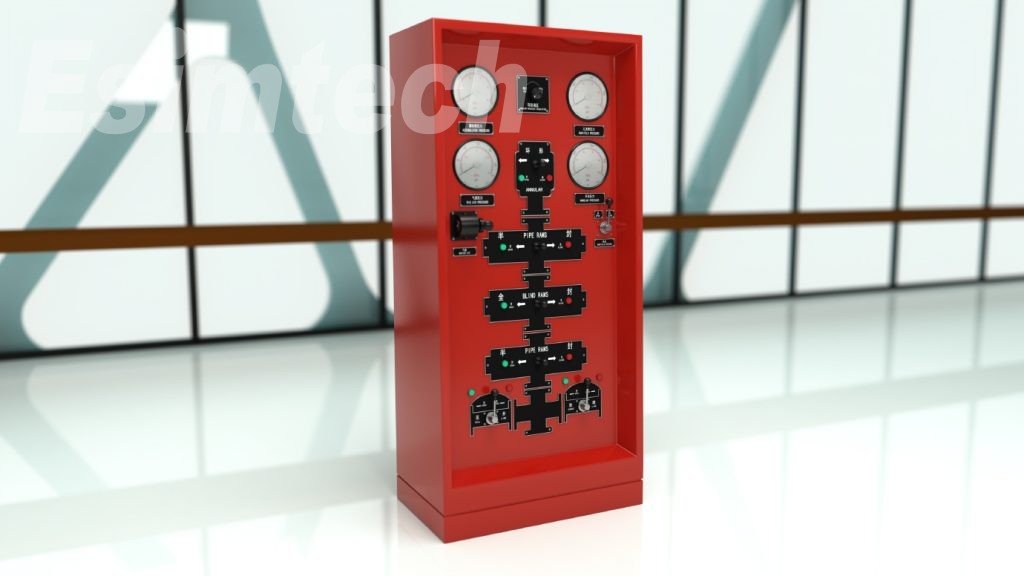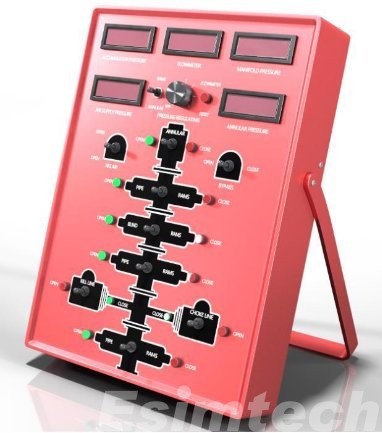Annular BOPs vs. Ram BOPs: Which are Better
In the realm of oil and gas drilling, safety takes precedence above all else, and at the heart of safety measures lies the Blowout Preventer (BOP). This critical equipment acts as a safeguard against the potentially disastrous consequences of uncontrolled oil or gas releases, known as blowouts. Among the various types of BOPs, two primary categories find extensive use: annular BOPs and ram BOPs. This article delves into the nuances of these two BOP types, shedding light on their distinct characteristics and the scenarios where their application is most fitting.

Functions of Annular BOP and Ram BOP:
Annular BOP:
Annular Blowout Preventers, commonly referred to as annular BOPs, derive their name from their sealing method, which operates within the annular space between the wellbore and the drill pipe or casing. These BOPs offer a versatile well control solution, thanks to their ability to adapt to various pipe sizes and irregular wellbore shapes.
Key Features of Annular BOPs:
Flexible Sealing Element:
Annular BOPs feature a flexible rubber element, known as the packing unit, which forms a tight seal around the drill pipe or casing when activated. This flexibility allows annular BOPs to effectively seal around pipes of different sizes.
Adaptability:
Annular BOPs excel in situations where the wellbore geometry is irregular or when drilling through formations with varying shapes. The flexibility of the sealing element enables them to create reliable seals even in non-standard wellbore conditions.
Ease of Maintenance:
Maintenance of annular BOPs is generally straightforward compared to ram BOPs. The rubber packing unit can be replaced or repaired relatively easily, reducing downtime and operational costs.
Applications of Annular BOPs:
Drilling Operations:
Annular BOPs are commonly used during drilling operations to control wellbore pressure and provide a seal around the drill pipe.
Well Control:
They play a crucial role in well control systems, acting as a backup measure to prevent blowouts.
Circulation:
Annular BOPs facilitate wellbore fluid circulation, allowing mud and other fluids to be circulated down the drill pipe and back up the annulus.
Ram BOP:
Ram Blowout Preventers, also known as ram BOPs, utilize metal blades or rams to establish a tight seal around the drill pipe or casing. Unlike annular BOPs, ram BOPs excel in delivering precise sealing and are often employed as a secondary well control safeguard, particularly during critical situations.

Key Features of Ram BOPs:
Sealing Mechanism:
Ram BOPs use metal rams to create a seal around the pipe. These rams can be configured for different purposes, such as sealing around the drill pipe or casing, cutting and sealing the pipe in emergencies, or creating a complete seal when no pipe is present.
Specialized Configurations:
Ram BOPs come in several specialized configurations, including blind rams, pipe rams, shear rams, and variable rams, providing versatility in addressing various well control scenarios.
Reliability:
Ram BOPs are known for their reliability and are often used as the last line of defense in a well-control system, providing a robust and immediate seal, especially in emergencies.
Applications of Ram BOPs:
Emergency Well Control:
Ram BOPs are often considered the last line of defense in well control systems, deployed in emergencies to quickly and precisely seal off the wellbore.
Deepwater Drilling:
In deepwater drilling operations where the consequences of a blowout can be catastrophic, ram BOPs, including shear rams, are crucial for maintaining control over the well.
Ensuring Well Integrity:
Ram BOPs play a critical role in ensuring the integrity of the well, especially when dealing with challenging formations or high-pressure zones.
Comparison Between Annular BOP and Ram BOP:
While both BOP types serve the fundamental purpose of well control, they differ in design, function, and applications. Here’s a comparison between annular and ram BOPs:
Design and Function:
Annular BOP:
Circular, doughnut-shaped rubber component.
Adaptable for various pipe sizes and irregular wellbore shapes.
Ram BOP:
Metal plates (rams) that create a hermetic seal.
Designed for precise sealing, particularly in critical situations.
Sealing Mechanism:
Annular BOP:
Flexible rubber element provides dynamic sealing.
Accommodates variations in pipe size and shape.
Ram BOP:
Rigid steel plates (rams) provide a fixed seal.
Generally more reliable for high-pressure and high-temperature conditions.
Applications:
Annular BOP:
Primary safeguard in drilling operations and well control.
Well testing and wireline operations.
Ram BOP:
Secondary or contingency BOP in emergencies.
Shearing or cutting the drill pipe.
Maintenance:
Annular BOP:
Generally easier to maintain and repair.
Elastomeric seals may require periodic replacement.
Ram BOP:
More complex maintenance due to mechanical components.
Cost:
Annular BOP:
Often less expensive.
Cost-effective choice for certain drilling situations.
Ram BOP:
Typically more expensive due to precision engineering.
Advantages of Using Annular BOP and Ram BOP in Simulation:
Performance Analysis:
Simulations enable performance analysis across diverse drilling scenarios, assessing sealing effectiveness and pressure-holding capacities.

Pressure and Flow Modeling:
Precisely replicate pressure dynamics to determine the appropriate BOP system for anticipated conditions.
BOP Compatibility:
Assess compatibility with wellbore design and drilling equipment to ensure effective well sealing.
Dynamic Drilling Scenarios:
Replicate well kicks and pressure surges to evaluate BOP responses during emergencies.
Training and Preparedness:
Use simulations for training drilling crews in proper BOP operation and response procedures.
Risk Assessment:
Evaluate risks associated with BOP choice and potential consequences of failure.
Conclusion:
Annular and ram BOPs play vital roles in ensuring the safety and integrity of oil and gas drilling operations. The choice between them depends on specific drilling conditions, wellbore geometry, and safety requirements. Utilizing simulations helps in selecting appropriate BOPs by analyzing performance, pressure dynamics, compatibility, and risk factors. Regardless of the choice, BOPs remain essential frontline defenses, safeguarding personnel and the environment in the oil and gas industry.
- Art
- Causes
- Crafts
- Dance
- Drinks
- Film
- Fitness
- Food
- Games
- Gardening
- Health
- Home
- Literature
- Music
- Networking
- Other
- Party
- Religion
- Shopping
- Sports
- Theater
- Wellness


